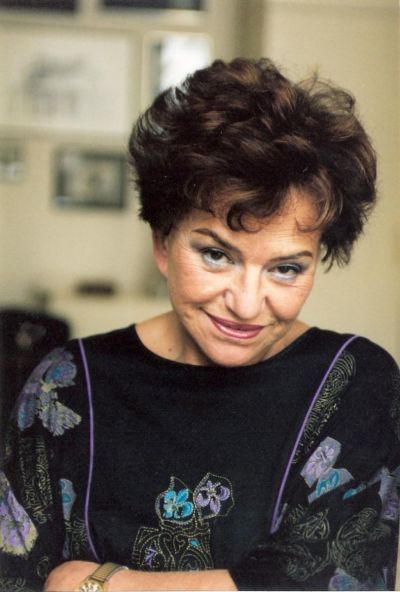Helena Bohle-Szacki

The situation begins to deteriorate in 1944. One day the Gestapo visits the family and takes the 16-year-old Helena for interrogation. They ask her about her mother, who has been constantly hiding behind a cupboard in the apartment which Lilka shares with her father. The girl is arrested for no reason whatsoever: she might well have been denounced as a half-Jew. Her completely distraught father tries to set every lever in motion to free her from prison. Without success. A month later Helena and a group of about 400 women are taken to the Ravensbrück concentration camp in a cattle car. She is classified as "antisocial" and forced to wear a yellow-black triangle. At that time about 30,000 women were interned in Germany's largest concentration camp for women. They suffer from hunger, disease and lice infestation.
Despite the reality of the Ravensbück camp, Helena in begins to draw scenes, images of saints and small portraits of her fellow sufferers. She also paints the Madonna - tender, girlish, with long eyelashes and a pretty nose. The drawing survives the war, and years later its creator will use it to sketch models for her fashion collections for leading fashion houses. In keeping with her incomparable sense of humour, she herself will later compare her picture of the Madonna in the camp with Pola Negri.
In Ravensbrück Helena volunteers for the next transport. She is to travel to Flossenbürg in Bavaria and work in arms production there. For unknown reasons she is assigned to the category of political prisoners and receives a new patch for her clothes – a red triangle. In April 1945 the concentration camp is evacuated. For the interned women, a death march to the Zwodau subcamp (Svatava, now in the Czech Republic) begins. There they are liberated by the Americans on May 7th and subsequently Helena sets off for home to look for her parents.
After the end of the war Maria Fanny and Alexander Bohle livefor a time in Łódź They regard their daughter's return as a miracle. Helena suffers from tuberculosis and other complaints, and she also has to deal with her traumatic experiences. It will take some time before she can sleep in a bed again instead of on the floor.. The reasons for her later health problems - heart disease, infertility and deteriorating eyesight – can also be traced back to her experiences in the camp.
In 1947 Lilka is enrolled at the Academy of Fine Arts. She studies graphic art, amongst others with the famous painter Władysław Strzemiński, who will have a great influence on her work. A short time later, at the age of 19, she embarks upon her first marriage to a much older doctor, Benedykt Winer: "My first marriage was of an incredibly short duration. Maybe I wanted to compensate for all my bad experiences, illnesses and the time in the camp. Something in me had been suppressed, but then it gradually came to light. "Suddenly I began to make up for everything that I had been deprived of."[2] Shortly afterwards she meets her second husband, Jerzy Urbanowicz.
The joy of regaining her youth ends at the beginning of the 1950s when the next family tragedy occurs. Her father is arrested by the State Security (Urząd Bezpieczeństwa, UB) and throws himself out of the window for unknown reasons. His funeral is attended by many mourners since he was very well known and appreciated in Łódź. Following this, Helena's mother, who cannot come to terms with her husband's death, leaves Poland to find exile, first in Israel and later in Brussels.
[2] Czerwiakowska, Ewa: Między Łodzią i Warszawą. Z pamięci, in: Różyc, Marcin (ed.): Helena Bohle-Szacka. Lilka, Białystok 2017, p. 318.


